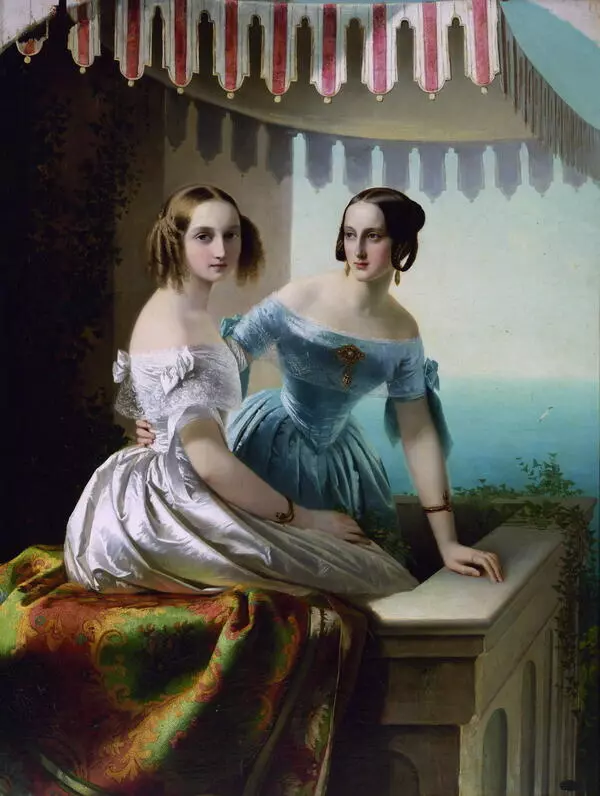Timofey Andreyevich Neff was a Russian painter of German origin. He was born in Estland Governorate, on the territory of modern Estonia, in 1805. At birth he was given the name Karl Timoleon von Neff. The name and patronymic Timofey Andreyevich were granted to the artist together with the title of nobility in 1844.
The artist-to-be was the illegitimate son of a French governess. He studied at the Dresden Academy of Arts and perfected his art in Italy.
In 1826, the artist arrived in St. Petersburg and became known as a major representative of Salon Academism of the mid-19th century. He won great acclaim among the upper aristocracy and was commissioned to paint a lot of portraits. His images of bathers and nymphs were regularly on display at exhibitions and dominated the salons and fashionable drawing rooms of St. Petersburg mansions of the 19th century.
In 1837, he traveled throughout the Russian Empire.
In 1839, the artist was awarded the title of Academician of Painting for his paintings for the Small Church of the Winter Palace, including “The Last Supper”.
In 1849, the paintings for St. Isaac’s Cathedral in St. Petersburg earned Neff the title of Professor of Historical and Portrait Painting at the Imperial Academy of Arts.
For his academic style, Timofey Neff has often been compared to Anton Raphael Mengs, a German painter, draftsman and theorist, one of the founders of the art of Neoclassicism.
Timofey Neff was a court painter of Nicholas I.
From 1864, he was Keeper of the Picture Gallery of the Imperial Hermitage, succeeding Fyodor Bruni, a painter, draftsman and teacher.
From 1870, he was a Privy Counselor to Emperor Alexander II.
The artist died in Saint Petersburg in 1877 and was buried in the Smolensk Lutheran Cemetery.
As a court painter, Timofey Neff painted many
portraits of dignitaries and people of nobility, often depicting children from
noble families. One of these paintings, which came to the Alexander Grigoriev
Art and History Museum from Moscow in 1920, is a commissioned portrait of the
children of the Olsufiev family. It depicts the children of Vasily Dmitrievich
Olsufiev, a wealthy landowner, veteran of the Russian Patriotic War of 1812,
Moscow’s civil governor, and Chief Master of the Court.





